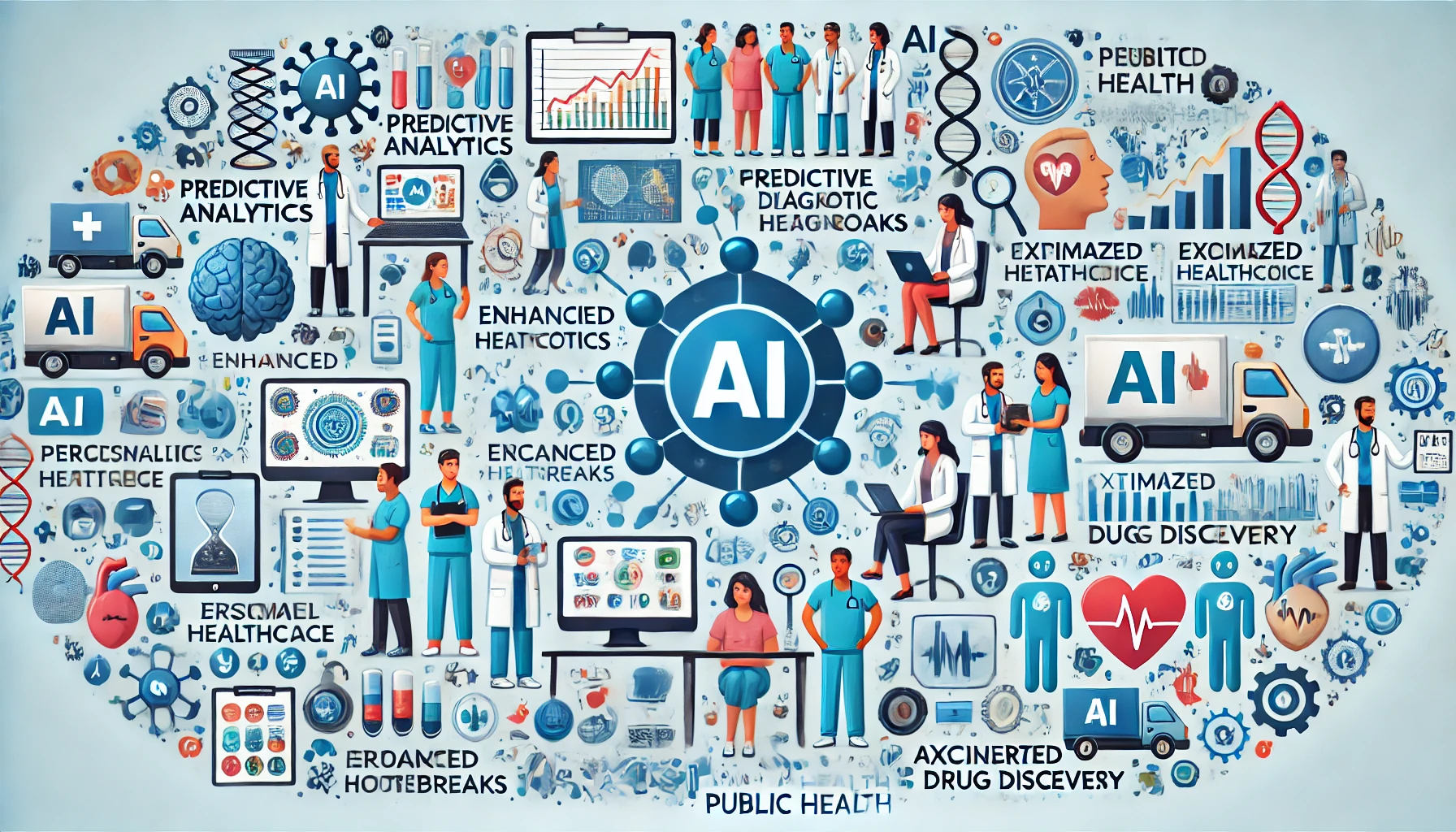The Role of AI in Revolutionizing Public Health
Artificial Intelligence (AI) is transforming the landscape of public health, offering innovative solutions to long-standing challenges. From predictive analytics to personalized healthcare, AI is enhancing the efficiency, accessibility, and quality of health services globally. Here’s an exploration of how AI is making a significant impact on public health.
Predictive Analytics for Disease Outbreaks
AI’s predictive analytics capabilities are crucial in forecasting disease outbreaks. By analyzing vast amounts of data from various sources, including social media, health records, and climate data, AI models can identify patterns and predict potential outbreaks. This allows public health authorities to take preemptive measures, allocate resources effectively, and mitigate the spread of infectious diseases.
Example:
During the COVID-19 pandemic, AI models helped predict hotspots and the spread of the virus, enabling governments to implement targeted lockdowns and resource distribution.
Enhancing Diagnostic Accuracy
AI-powered diagnostic tools are improving the accuracy and speed of disease detection. Machine learning algorithms can analyze medical images, lab results, and patient histories to identify diseases such as cancer, tuberculosis, and cardiovascular conditions with high precision. This reduces the burden on healthcare professionals and ensures early and accurate diagnosis, leading to better patient outcomes.
Example:
Google’s DeepMind developed an AI system that can detect over 50 eye diseases from retinal scans with an accuracy comparable to leading experts.
Personalized Healthcare
AI is enabling personalized healthcare by analyzing individual patient data to tailor treatment plans. This approach considers genetic information, lifestyle, and environmental factors to recommend personalized interventions, improving the efficacy of treatments and patient satisfaction.
Example:
AI-driven platforms like IBM Watson Health use natural language processing and machine learning to provide personalized cancer treatment recommendations based on the latest medical research and patient data.
Optimizing Resource Allocation
In resource-constrained environments, AI can optimize the allocation of healthcare resources. By analyzing data on patient needs, healthcare facility capacities, and supply chain logistics, AI systems ensure that resources such as medical staff, equipment, and medications are distributed efficiently.
Example:
AI algorithms have been used in developing countries to manage vaccine distribution, ensuring that vaccines reach the populations most in need in a timely manner.
Improving Mental Health Services
AI is making mental health services more accessible and effective. Chatbots and virtual therapists, powered by natural language processing and sentiment analysis, provide immediate support and guidance to individuals experiencing mental health issues. These tools can triage cases and refer patients to human therapists when necessary.
Example:
Woebot, an AI-powered chatbot, offers cognitive-behavioral therapy (CBT) to users, helping them manage stress, anxiety, and depression through real-time conversations.
Public Health Surveillance
AI enhances public health surveillance by continuously monitoring data from various sources to detect health threats. This includes tracking disease incidence, monitoring environmental hazards, and analyzing social determinants of health. AI-driven surveillance systems can quickly identify and respond to emerging health threats, protecting communities from potential harm.
Example:
The World Health Organization (WHO) uses AI to monitor and analyze data from health systems worldwide, identifying early signs of outbreaks and other public health emergencies.
Accelerating Drug Discovery
AI is revolutionizing drug discovery by speeding up the identification of potential drug candidates. Machine learning algorithms can analyze biological data and predict how different compounds will interact with disease targets, significantly reducing the time and cost of developing new medications.
Example:
AI platforms like Atomwise use deep learning to predict the effectiveness of new drugs, leading to the discovery of promising candidates for diseases such as Ebola and multiple sclerosis.
Conclusion
The integration of AI in public health is ushering in a new era of healthcare that is more proactive, precise, and personalized. By harnessing the power of AI, we can address complex health challenges, improve patient outcomes, and enhance the overall efficiency of health systems. As technology continues to advance, the potential for AI to transform public health will only grow, paving the way for a healthier future for all.

